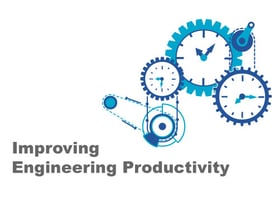Engineers face a constant barrage of competing priorities from customers, co-workers, managers, and...
Eliminating Distractions: Advanced Time Management Tip #2
Addictive and habitual digital distractions stem from more than just technology. Workplace culture (in particular, the “always on” culture), social norms, and individual behaviors all contribute to society's addiction to digital distractions. Read Slaying the Digital Addiction to discover how digital distractions are stealing your time.
To have the correct perspective on technology, we must understand not only how technology is changing, but how technology is changing us.
If you are using technology as a temporary distraction from a task that you dislike, or an escape from “an uncomfortable reality,” think about what role the distractions are playing in your workplace performance/productivity. In more extreme cases where distractions become coping mechanisms for some “bad” experience or permanent situation, no amount of distraction will “heal” it. The solution is to learn new strategies to cope or fix what is broken.
In addition, it is important to understand what a distraction is. Distraction is a process that results from a stimulus or alternative task that draws a person’s attention away from the primary task of interest. Simply put, a distraction pulls us away from what we want or need. When a distraction becomes a habit, we lose the ability to maintain the requisite focus for creativity in our professional and personal lives. If distractions overtake our behavior, they can damage or block relationships that are necessary for psychological well-being and satisfactory work performance.
According to entrepreneur and blogger, Nir Eyal, the opposite of distraction is “traction.” As dis-traction moves us AWAY from what we really want, traction moves us TOWARD what we really want. Traction is something a person does with intent. Eyal posits that all human behavior is the result of internal and external triggers. External triggers can come from people, objects, and devices such as ding or ping from a cell phone. Internal triggers are cues from within such as feeling hungry or cold. Since all behaviors are responses to internal and external triggers or cues, distraction and traction come from the source.
Eyal recommends 4 steps to become indistractable: master internal triggers; make time for traction; hack back external triggers; and prevent distraction with pacts. If the root cause of all human behavior is to escape discomfort, as he argues, it follows that distraction is an unhealthy escape from bad feelings. While a person cannot CONTROL feelings, s/he can manage REACTIONS to feelings.
Studies have shown that resisting a desire or impulse can make the desire stronger. When someone finally gives in to the temptation, a bad habit can start. Dr. Jonathan Bricker of the Fred Hutchison Cancer Research Center in Seattle, advises his patients who want to master their triggers to effectuate behavioral change to identify the thought or feeling behind the urge, keep a distractions log that includes what the feeling was, when it occurred during the day, and what they were doing at the time, and note the thoughts and feelings that preceded the distraction.
Eyal’s second step is make time for traction. Since values are the attributes of what a person wants to become, it is important to turn values into time. An example of this in the workplace might be the employee who determines to be a contributing member of a team through proper preparation and collaboration. In other words, distraction avoidance means daily thoughtful and purposeful planning of traction behaviors that define what is to be done and when in synch with the stakeholders (e.g., one’s peers, manager, family members, etc).
The third step is hack back external triggers. Not all external triggers are distractions. If a person uses a trigger as a reminder to do a planned activity, for instance, this is not a distraction. The right approach is to understand whether the trigger is serving you, or whether you are serving it. If the prompt leads to a distraction, eliminate it. Other practical suggestions include removing unused apps on your cell phone and moving some of the ones you like to your computer, rearranging the remaining apps to prevent visual clutter, and adjusting the notification settings on apps. Social media sites often are the greatest threat because they easily can become the source of endless triggers. New tools can eliminate newsfeeds on apps to reduce triggers. Another technique is to resolve not to engage with social media until more important traction tasks are complete.
Finally, Eyal notes that the ultimate antidote to impulsivity is forethought. He encourages people to make a “precommitment” to overcome distractions. Precommitments are “pacts” we make in advance of the temptations that we know might come to engage in other traction tasks or behaviors instead.
Ultimately, productivity is a measure of the usefulness and value of an engineer. Clearly, technology can – and has – improved productivity in the field in many ways. However, overuse of technology can backfire and lead to digital distractions with unhealthy consequences and the loss of productivity.
Get Practical Tips for Increasing Productivity in Advanced Time Management for Engineers




